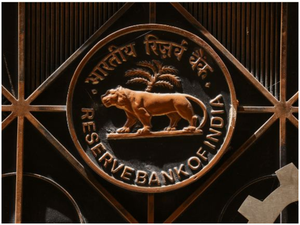World sees India on cusp of economic take-off: RBI report
By IANS | Published: May 21, 2024 06:54 PM2024-05-21T18:54:12+5:302024-05-21T18:55:12+5:30
Mumbai, May 21 Internationally there is a growing optimism that India is on the cusp of a long-awaited ...

World sees India on cusp of economic take-off: RBI report
Mumbai, May 21 Internationally there is a growing optimism that India is on the cusp of a long-awaited economic take-off, according to the RBI’s monthly bulletin released on Tuesday.
It states that recent indicators are pointing to a quickening of the momentum of aggregate demand and non-food spending is being pushed up by the green shoots of rural spending recovery.
The RBI bulletin points out that while revising India’s GDP growth upwards by close to 2 percentage points for 2023-24, the IMF’s April 2024 World Economic Outlook (WEO) alludes to the robustness of growth expected in 2024 and 2025 as “reflecting continuing strength in domestic demand and a rising working-age population.”
It highlights that India is expected to continue to experience broadly stable and rapid growth according to the OECD, while inflation should moderate further provided food prices remain insulated from extreme weather events.
The OECD’s May 2024 Economic Outlook points to strong momentum in India in recent monthly indicators and expects “strong investment and improving business confidence in India …to sustain real GDP growth”.
The RBI bulletin also states that there is considerable appreciation for the dramatic reduction in poverty in India. The World Bank estimates that at the height of the pandemic in 2021, only 12.9 per cent of the population lived on US$ 2.15 a day – the global benchmark for extreme poverty. More recent estimates show that extreme deprivation, once considered synonymous with India, is set to become extinct.
There is also a worldwide focus on the transformation of the physical infrastructure, including highways, ports and airports. India’s power sector has attained 100 per cent electrification and has been integrated into a single grid across the country.
Daily power availability has increased to 20 hours in rural areas and 23.5 hours in urban areas while aggregate technical and commercial losses have narrowed considerably.
There has been a leap in renewable energy capacity creation, with India becoming the world’s third-largest renewable energy producer. It has attained world leadership in leveraging the digital public infrastructure for payment efficiency, financial inclusion and direct benefit transfers.
The RBI bulletin also states that currently, India boasts the highest number of digital transactions, fuelled by a massive internet user base. Broadband connectivity has also seen a significant leap, reaching over 93 per cent of our villages. The Bharat Net project will connect all villages through high-speed internet. Digital platforms like the Open Network for Digital Commerce (ONDC) are empowering small businesses by providing a larger marketplace.
India’s digital public infrastructure – the India Stack – is boosting productivity, and efficiency and generating employment, besides enabling better targeting of fiscal transfers.
It further highlights that recent indicators are pointing to a quickening of the momentum of aggregate demand in the personal consumption space.
Nielsen IQ data indicate that for the first time in at least two years, rural demand for Fast Moving Consumer Goods (FMCG) has outpaced urban markets.
Turning to private investment, the RBI report states that listed private manufacturing companies retained earnings remained the major source of funds during the second half of 2023-24. They were mainly used to build up fixed assets and non-current investments, indicating a pick-up in new capacity creation relative to the first half of the year.
However, the report also mentions the heightened geopolitical tensions that are exerting substantial upward pressures on key commodity prices, with crude oil and gold leading the surge as global factors that pose a downside risk.
Disclaimer: This post has been auto-published from an agency feed without any modifications to the text and has not been reviewed by an editor
Open in app